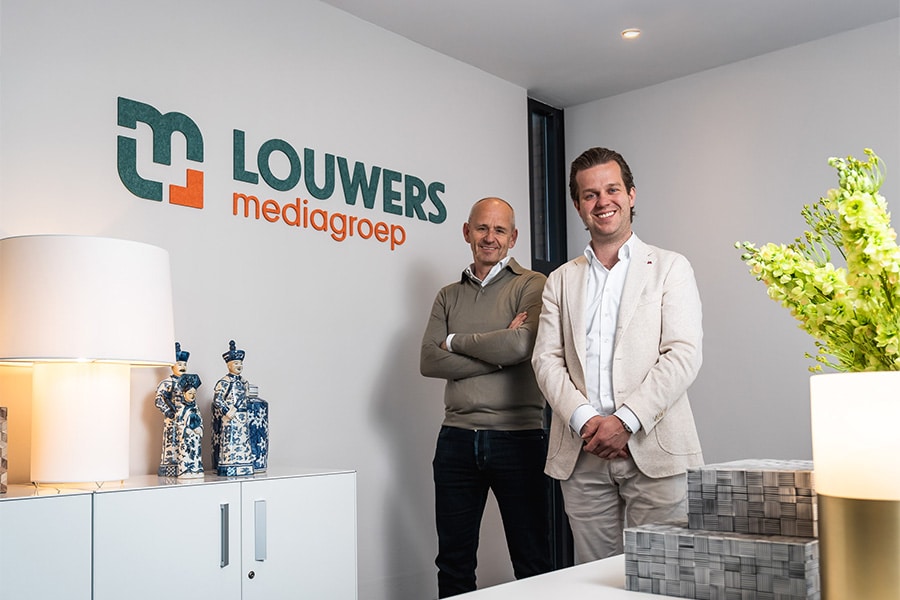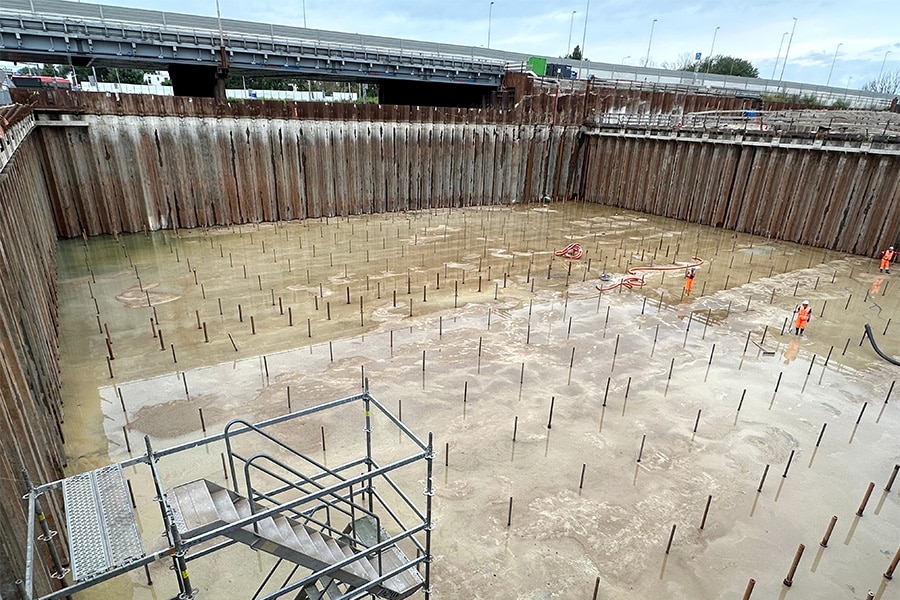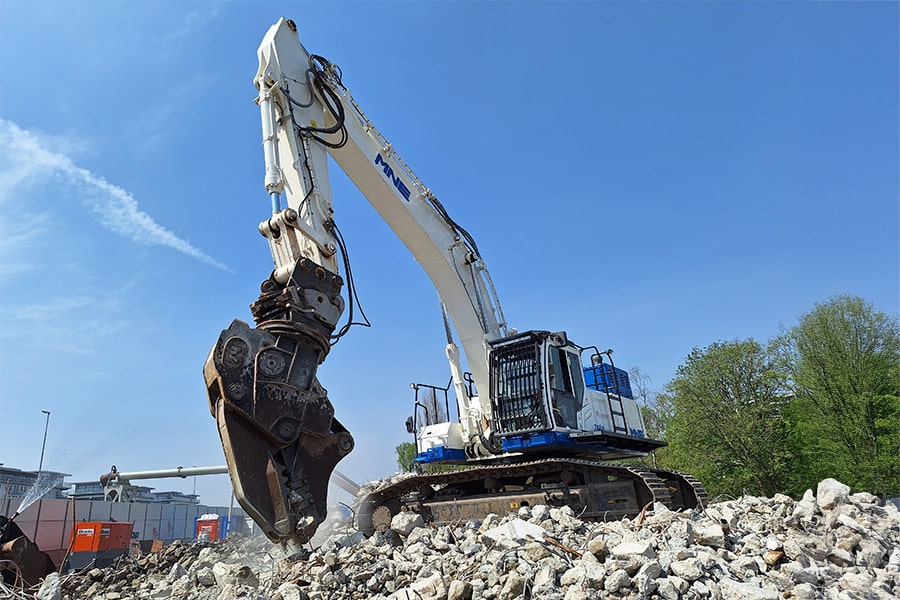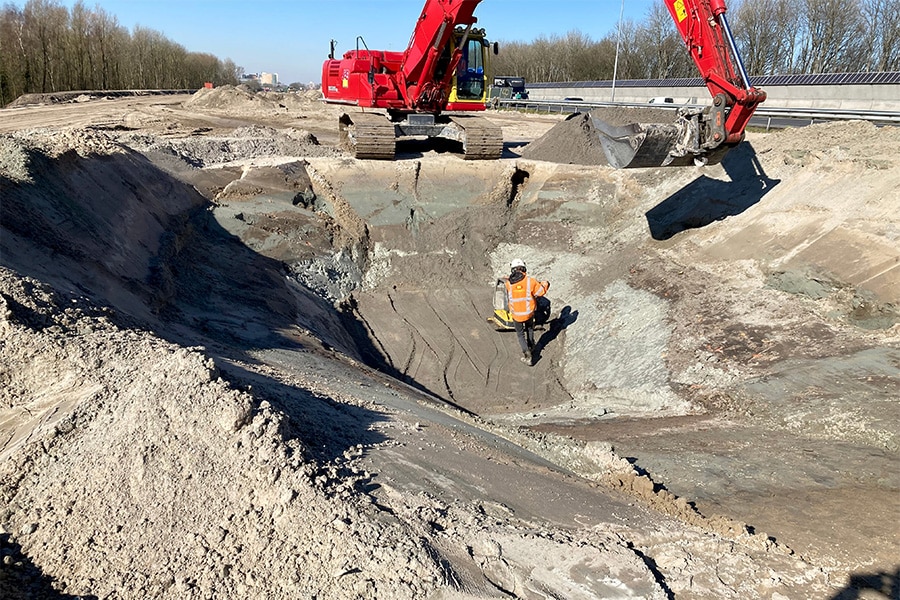
Sustainable dike reinforcement with minimal impact
As part of the High Water Protection Program, the northern Waal dike between Wolferen (Overbetuwe) and Sprok (Nijmegen) is being tackled. Commissioned by the Rivierenland Water Board, construction consortium De Betuwse Waard will strengthen the thirteen-kilometer stretch over the next few years. Through open and transparent cooperation in the preliminary phase, a smart and feasible plan has been developed to strengthen the dike with minimal impact on the environment and the surroundings. Implementation is now in full swing.

Because of the complexity of the project and the many stakeholders, the Rivierenland Water Board asked the market parties on board at an early stage. "From previous projects, such as Ruimte voor de Waal and Mooder Maas, Ploegam and Dura Vermeer have a strong link with each other, and for this project GMB joined them," begins Rob Bouwens, project manager in the combination. "Our approach is to carry out as much work as possible with our own people; you just need three parties for that. Parties that fit together very well, each with its own knowledge and expertise. It leads to a good mix with the right person in the right place every time. Right from the start there has been a fine dynamic between the companies and the people. The way we approached this project was fairly unique, by the way."

Fair money for fair work
Even before the realization phase, the combiners jointly picked up the design and plan elaboration and arrived at pricing in parallel. "The goal in the exploration phase was to arrive at an established and supported preferred alternative (VKA) as the starting point for the plan execution phase," says Berry Hol, technical manager in the combination . "Because as a combination we were also responsible for the design, we surrounded ourselves with a number of external partners for e.g. the landscaping (H+N+S), a partner for the geotechnical engineering (Fugro) and Royal HaskoningDHV with a technical manager and mainly modelers. From the beginning, the design was shaped in 3D. We then further concretized the plan in a number of "loops. In loop 1 the VKA was perpetuated, in loop 2 the land use was fixed with a focus on the environment. In loop 3 the risk profile was assessed and in loop 4 the documents for the main permit were prepared so that they went into procedure in time for the start of implementation." Bouwens adds: "The plan development and its pricing was done in full openness and transparency towards the water board. Fair money for fair work. That led to the realization agreement that was ratified in July 2021."
Nijmegen Marches
The project takes place on the north side of the Waal River. "The route of a total of thirteen kilometers is divided into about seven clusters," said Bouwens.

"We started last year at the railroad bridge in Nijmegen (cluster B) with the reinforcement of the dike, which together with cluster C up to the campsite in Oosterhout is still under construction until the end of 2022. A special feature of this route is that the route of the Nijmegen Four Day Marches will soon cross the work area. Of course, this has considerable consequences and requires careful planning and additional safety measures. At the end of this year we will start as planned with successively clusters D to G from the campsite in Oosterhout to Wolferen. This work is expected to take a good year. Then in 2024 we will return to Sprok, cluster A, on the other side of Nijmegen. The phasing is set up in such a way that for each phase we close the relevant section of dike and complete 99.9 percent of the work before moving on to the next phase."

Plastic piping screens
Depending on the location, the dike will be made higher and wider, or sheet pile walls will be placed and retaining berms constructed to improve stability. "For Waterschap Rivierenland, the piping issue is a broad theme that affects all projects," Hol knows. "In this project, too, a lot of attention was paid to how we can incorporate and optimize the current piping rules with an eye for alternatives. Not only the construction consortium, but also the water board learned a tremendous amount from this. It even led to the use of plastic piping screens. A more economical and environmentally better alternative, after all, plastic has a much more favorable MKI value. In the past, the use of steel sheet piles as piping screens was born purely out of necessity, because there were no alternatives. There are now. Ultimately, in this project, some 40,000 m2 to plastic piping screens applied that are similar in shape to a steel sheet pile board with a male-female and a lock. Insertion is also the same, although with a steel motherboard on the river side to absorb the force of the vibrating block. At depth, the mother board is disconnected and taken out."

The dike reinforcement operation is taking place in a natural environment. "Among other things, the work runs right through a Natura2000 area," says Bouwens. "This is subject to very strict requirements. We therefore have an ecologist on our team who ensures the right coordination. For example, we are only allowed to install sheet piling from October through spring and after that we have to leave nature alone. We also install all kinds of amphibian screens, toad screens and other temporary constructions in order to cause as little inconvenience to nature as possible. We are also using an electric crane to gain experience, together with the water board, with emission-free work in such projects. And so we try to do everything possible to carry out the dyke reinforcement with minimal impact on the surroundings and the environment."



